線上電影系統設計
阿新 • • 發佈:2020-12-25
# 線上電影系統設計介紹
> 專案地址:https://github.com/qitianfeng/yiying-parent ,後續會將專案的具體功能以文件形式展示出來,各位可以點個star關注關注
## 簡介
線上電影系統是一個使用 B2C 的網站開發模式的線上視訊觀看及線上電影購票系統,主要分為前臺使用者平臺和後臺運營管理平臺。實現電影的上傳、解碼、儲存、點播
### 前後端系統的主要功能模組
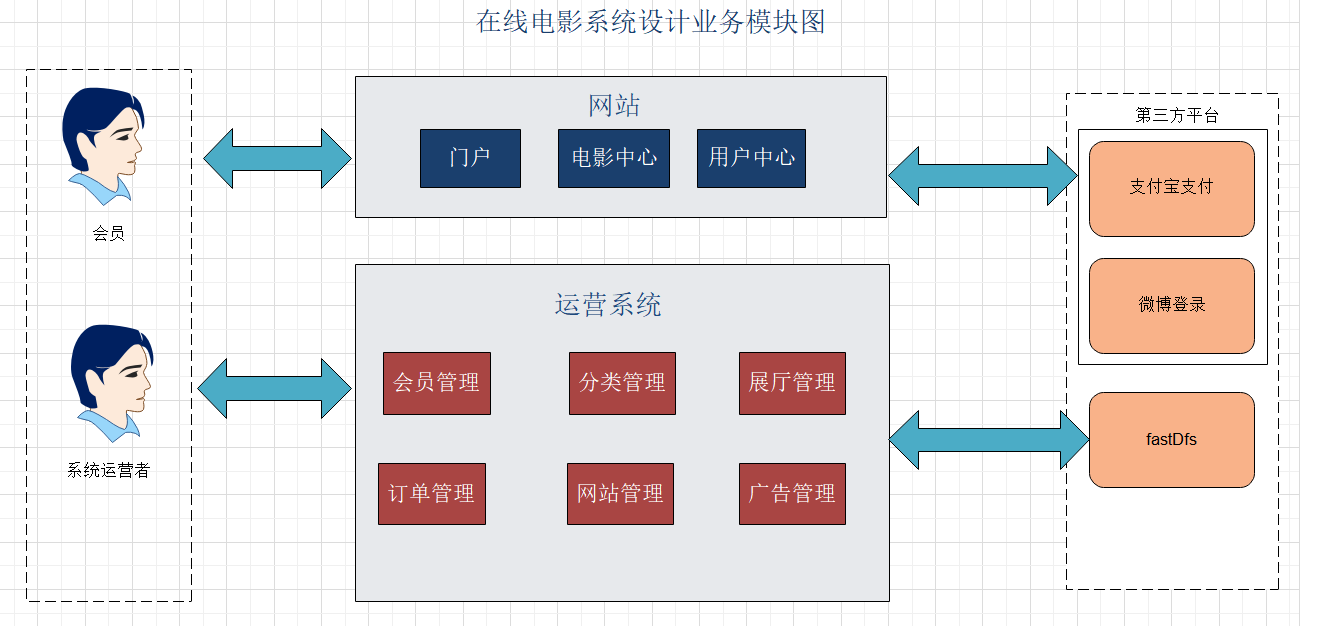
### 系統架構技術
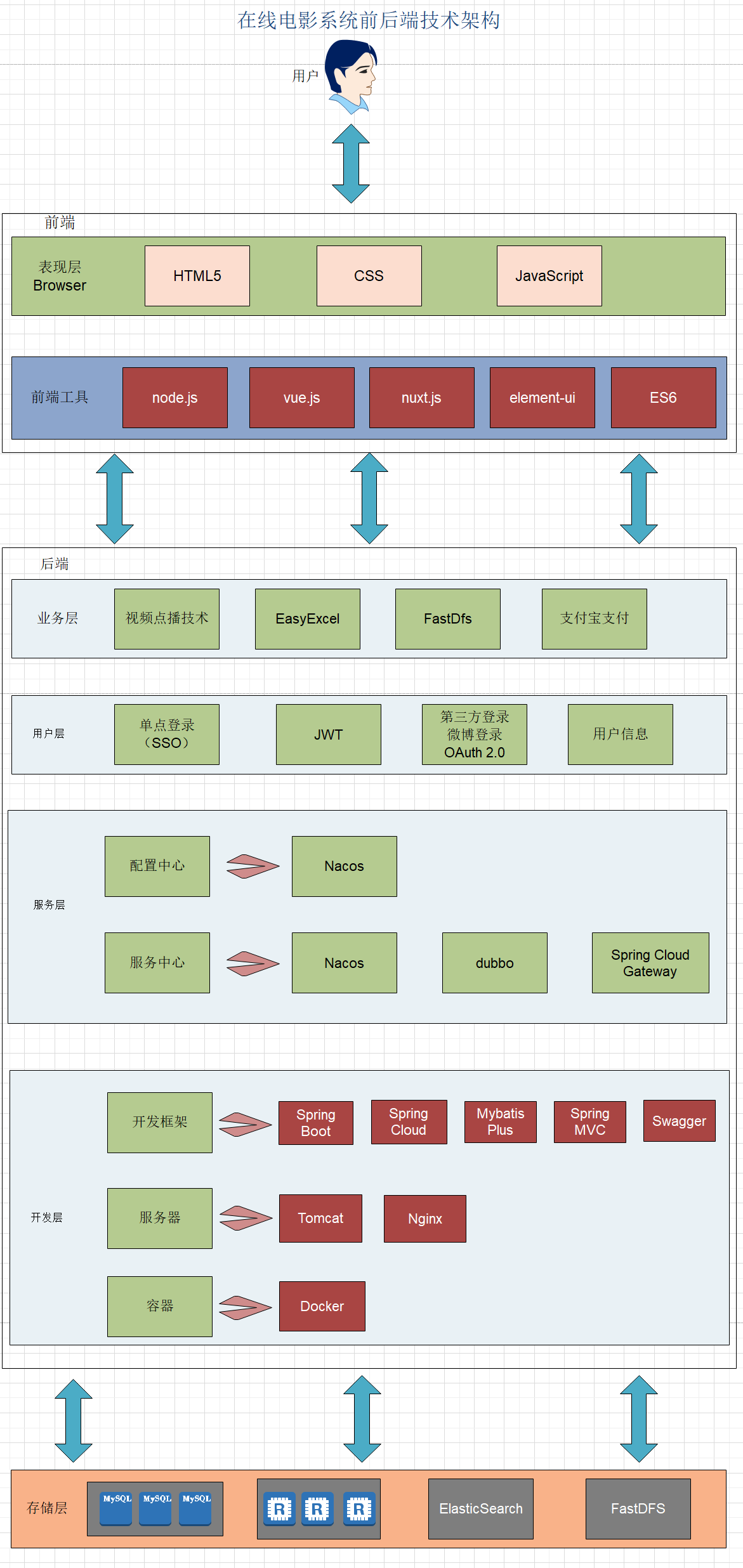
### 專案的具體描述
線上電影系統分為前臺門戶平臺和後臺管理平臺,使用B2C模式,微服務技術架構,前後端分離開發。
前臺的主要技術架構是:vue.js 、Nuxt.js 、Element-UI
後端的主要技術架構是:SpringBoot + SpringCloud + MyBatis-Plus + Dubbo + MySQL + Spring Cloud Getaway ;其他涉及到的中介軟體包括 Redis 、ElasticSearch 、令牌桶演算法、FFMPEG 對視訊的解碼;業務中使用 EasyExcel 完成分類批量新增、JWT 用於前臺門戶的分散式單點登入;專案前後端分離開發,後端採用 Spring Cloud 微服務架構,持久層用的是 MyBatis-Plus,服務與服務之間使用 dubbo 進行 RPC 通訊及使用 Swagger 技術生成各服務的介面文件。前端系統則分為前臺使用者系統和後臺管理系統兩部分。
前臺系統包括:首頁、電影中心、使用者中心。
其中首頁的主要分佈為以下幾個部分
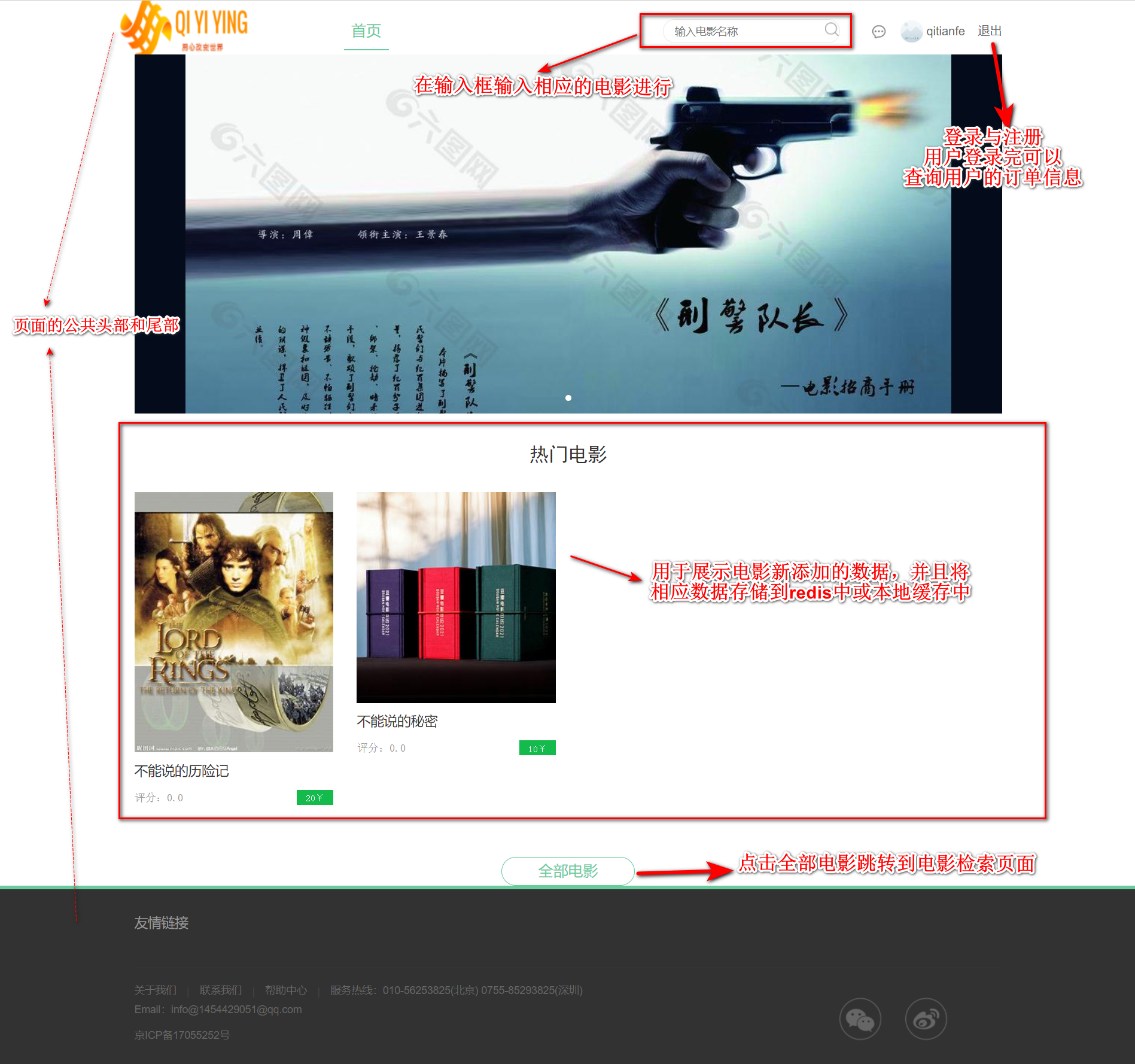
電影中心包括電影檢索頁面及電影的詳細資訊頁面
其中電影的詳情頁面主要為使用者展示電影的基本資訊:
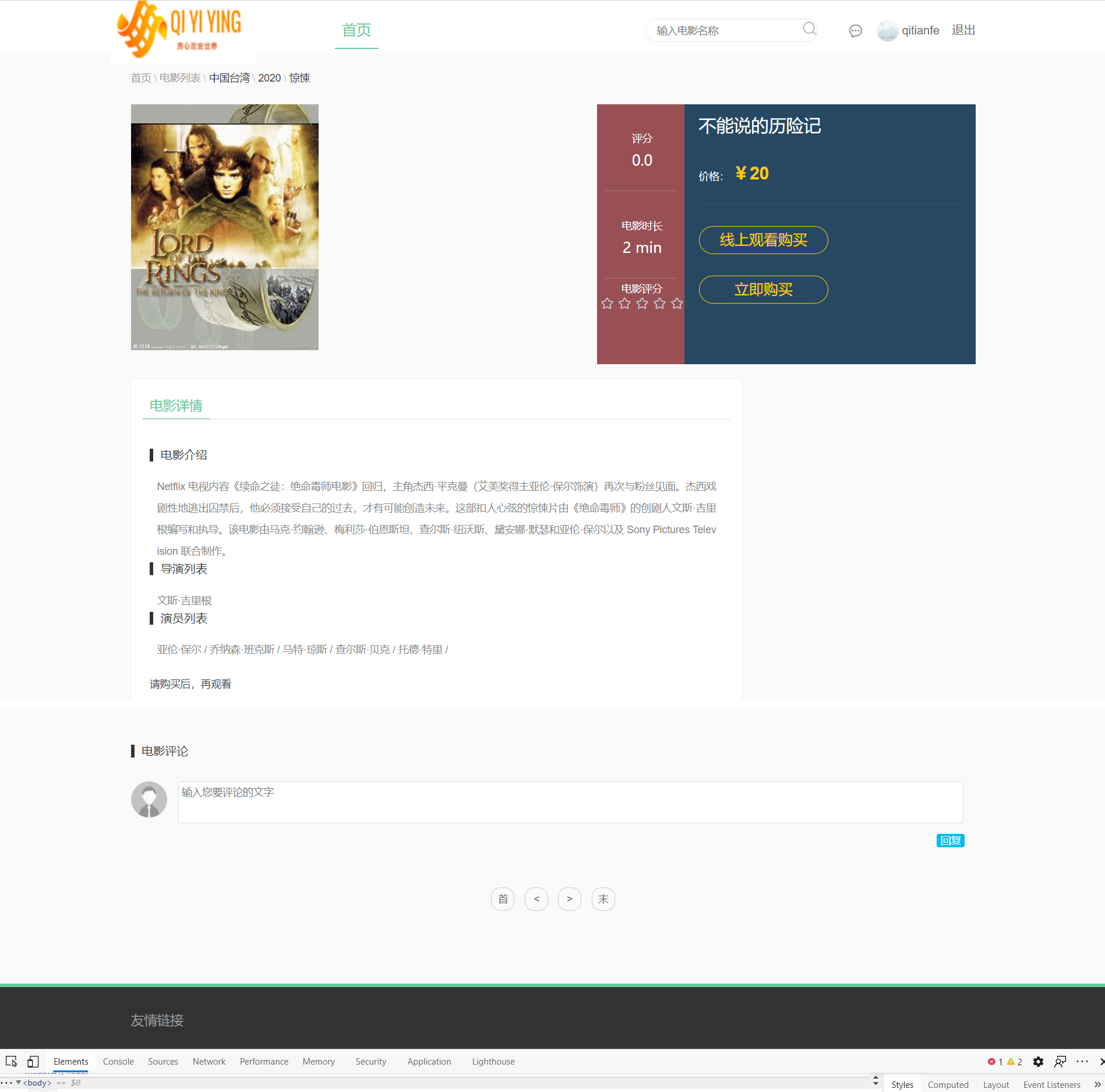
電影的搜尋頁面會將電影的分類資訊進行展示,方便使用者對感興趣的分類資訊進行檢索檢視,並且查詢的關鍵字會進行高亮處理,給使用者帶來新的體驗效果。
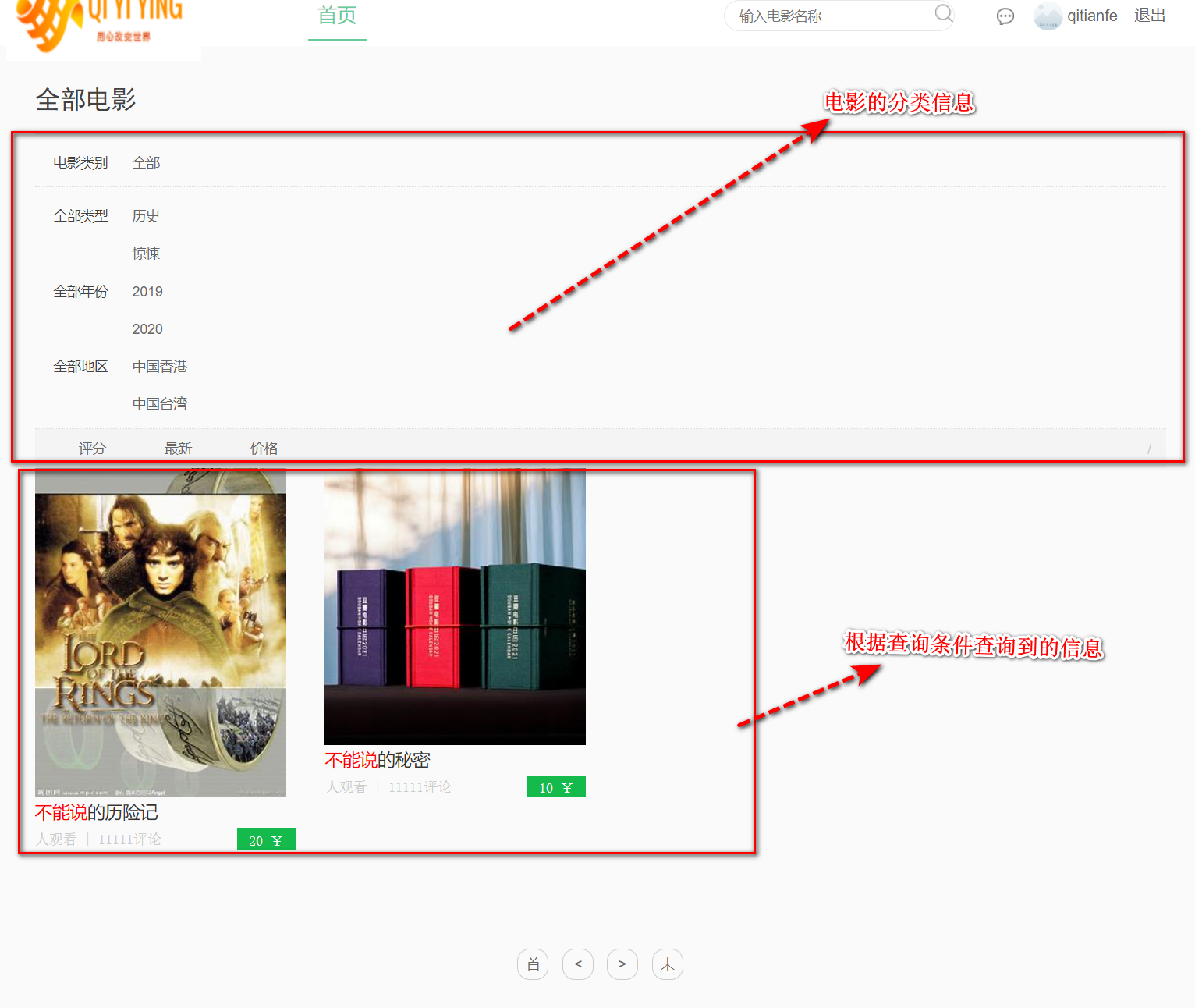
電影的下單頁面分為兩個頁面
1. 線上電影購票頁面,涉及座位的選座過程,以及動態計算選座過程的價格,實現真正的電影院選座和購買。
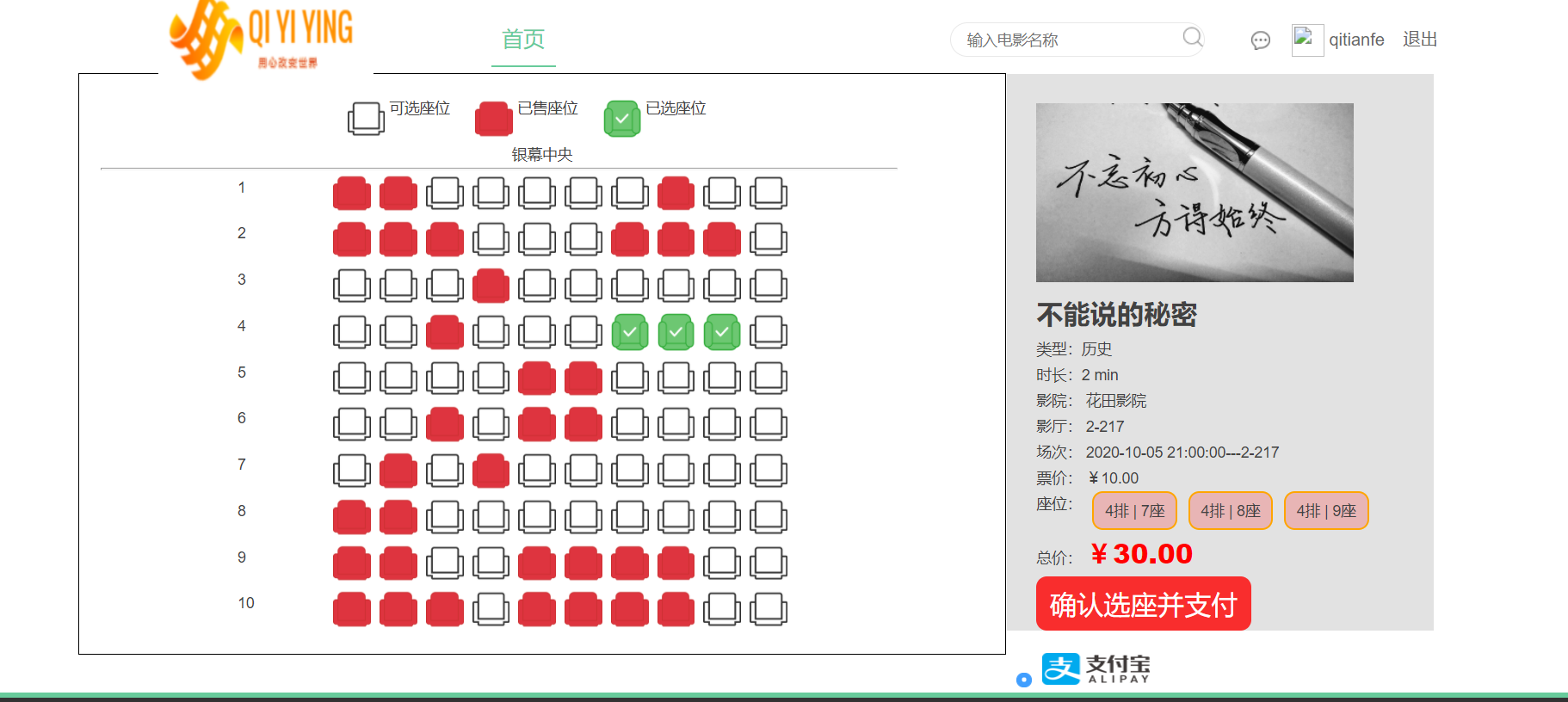
2. 線上電影觀看購買頁面
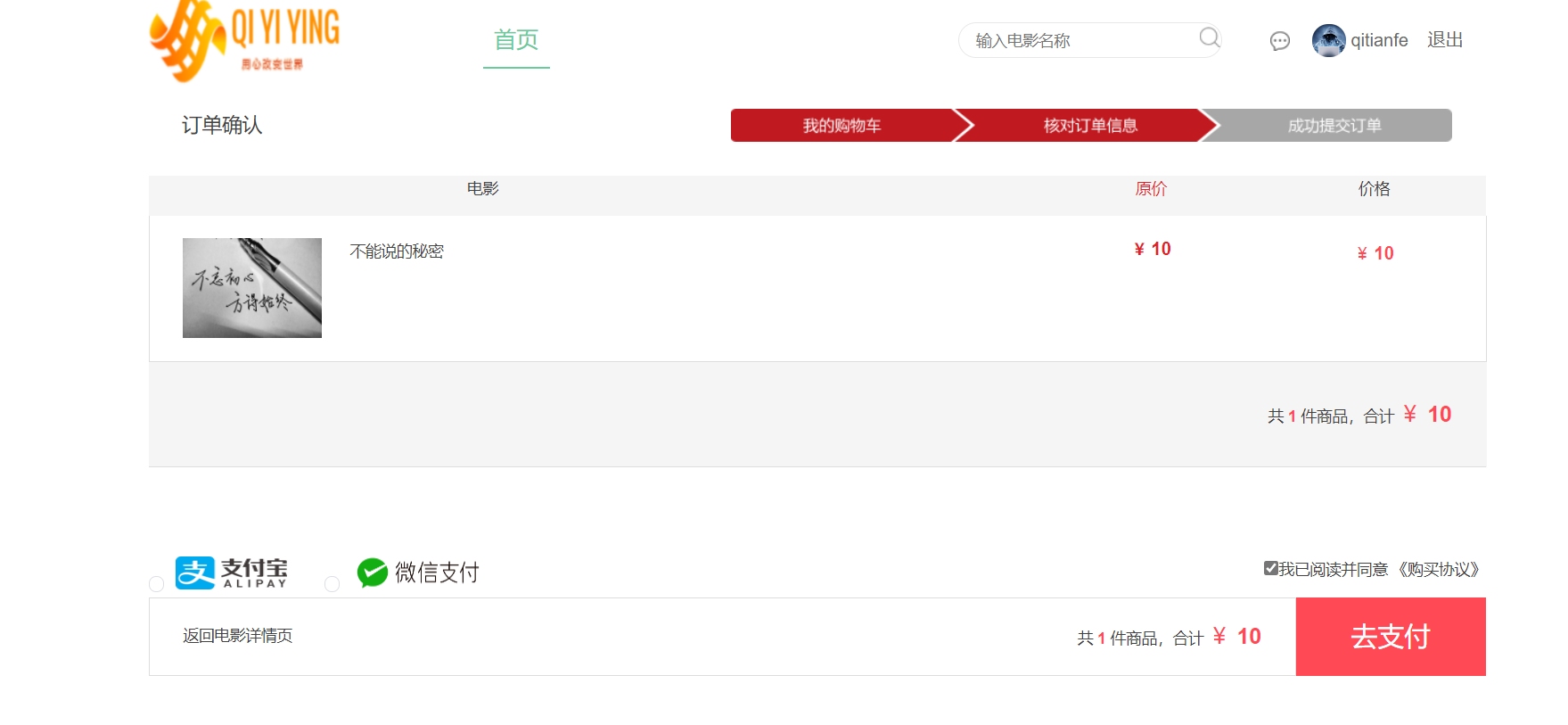
使用者中心:註冊與登入
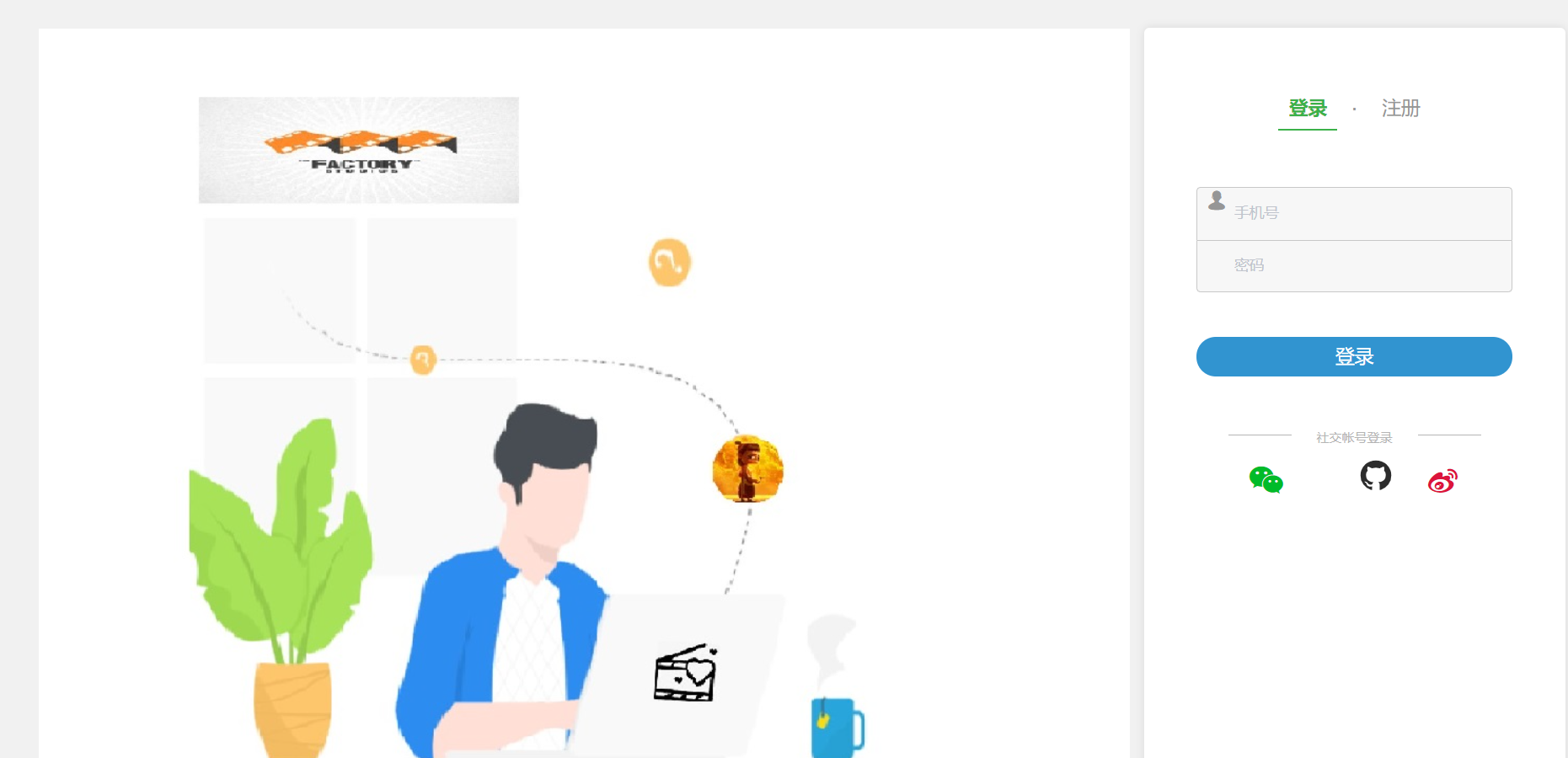
2. 後臺管理系統包括:電影管理、電影分類管理、電影展廳管理
電影分類介面和電影展廳介面使用excel技術,將excel裡的資訊轉化進而儲存到資料庫中
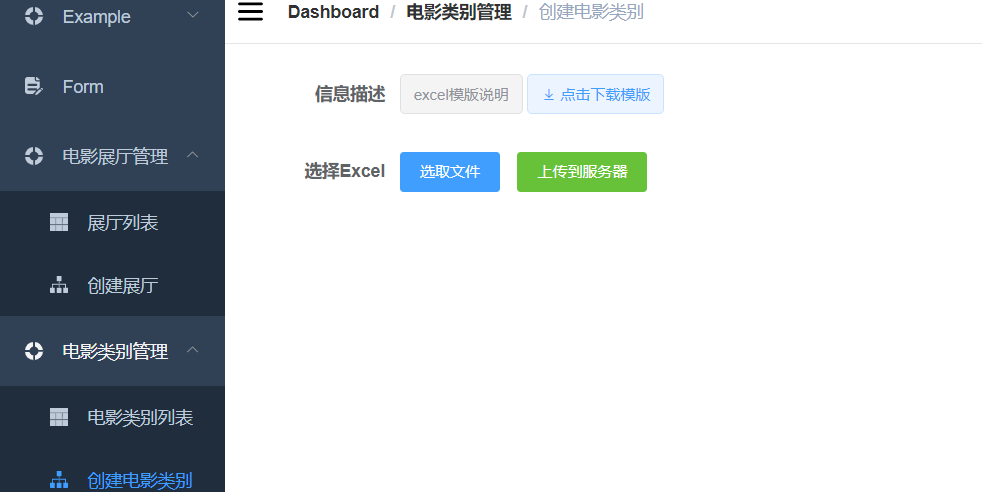
電影展廳展示介面

電影管理主要用於新增新電影的基本資訊,以及使用FFMPEG技術對上傳的視訊進行進一步的操作,進而釋出完整電影資訊

電影正式釋出後的介面

## 專案初始化
### 使用WebIDE搭建專案
1. 使用命令 mvn archetype:generate -DgroupId=com.yiying -DartifactId=yiying-parent -DarchetypeArtifactId=maven-archetype-quickstart -DinteractiveMode=false
(1)對命令相關引數的說明:
- **mvn**:maven命令
- **archetype:generate**:這是一個Maven外掛,原型 archetype 外掛是一個Maven專案模板工具包,可以用它建立基本的java專案結構。
- **-DgourpId**: 組織名,公司網址的反寫 + 專案名稱
- **-DartifactId**: 專案名(模組名)
- **-Dversion**:專案版本號
- **-DinteractiveMode**:是否使用互動模式:false不使用,直接建立;true使用,需要根據提示輸入相關資訊
(2)修改 pom 檔案
- 新增jar
org.mybatis
mybatis
3.5.3
mysql
mysql-connector-java
5.1.47 runtime
org.projectlombok
lombok
1.18.12
junit
junit
4.12
```
再使用命令 ``mvn install `` 進行依賴打包
3. 建立資料庫以及建立表
````mysql
--- 建立資料庫
CREATE DATABASE test;
--- 使用資料庫
USE test;
--- 建立相關表結構
CREATE TABLE `user` (
`id` char(19) NOT NULL COMMENT '會員id',
`name` varchar(50) DEFAULT NULL COMMENT '暱稱',
`age` tinyint(3) unsigned DEFAULT NULL COMMENT '年齡',
PRIMARY KEY (`id`)
) ENGINE=InnoDB DEFAULT CHARSET=utf8mb4 COMMENT='會員表';
使用show tables 命令查看錶是否建立成功
````
4. 在resource檔案下建立 ``mybatis-config.xml ``配置檔案
```xml
```
5. 建立 Mapper 對資料庫進行增刪改查操作
- 建立資料庫表的對映類
````java
//資料庫中有多少欄位對應類有多少屬性,不然會報錯
@Data //lombok的註解,用此註解可以不用對屬性的getter和setter方法進行重寫
public class User {
private String id;
private String name;
private String age;
}
````
- 建立 UserMapper 類
```java
@Mapper
public interface UserMapper {
//@Param 對傳入的資料進行繫結,當引數為一個時,可以選擇不加註解
//根據id查詢使用者資訊
public User getInfo(@Param("id") String id);
//查詢資料庫所有的使用者資訊
List findAll();
//增加一條使用者資訊
boolean insert(User user);
//根據使用者id更新使用者資訊
boolean updateUser(User user);
//根據使用者id刪除使用者資訊
boolean removeById(String id);
//模糊查詢
List findByName(String username);
}
```
6. 在 resource/mapper 檔案下建立 xml 檔案
```xml
insert into user(id,name,age)
values(#{id},#{name},#{age})
update user set name=#{name},age=#{age} where id = #{id}
delete
from user
where id = #{id}
```
7. 對增刪改查操作進行測試
```java
// 首先需要在 test 資料夾中建立測試類
//在處理測試時,先載入 init() 處理完測試後,載入 destory()
//在執行方法前執行
@Before
public void init() throws Exception {
//1.讀取配置檔案
in = Resources.getResourceAsStream("mybatis-config.xml");
//2.建立構建者物件
SqlSessionFactoryBuilder builder = new SqlSessionFactoryBuilder();
//3.建立 SqlSession 工廠物件
factory = builder.build(in);
//4.建立 Dao 介面的實現類
sqlSession = factory.openSession();
//5.建立代理物件
userMapper= sqlSession.getMapper(UserMapper.class);
}
/**
* 執行完方法後執行
*/
@After
public void destory(){
sqlSession.commit();
try {
sqlSession.close();
//釋放資源
in.close();
} catch (IOException e) {
e.printStackTrace();
}
}
```
````java
//查詢
public class Test {
private InputStream in;
private SqlSessionFactory factory;
SqlSession sqlSession;
private UserMapper userMapper;
//根據id查詢
@Test
public void test1(){
User user = userMapper.getInfo("1");
System.out.println(user);
}
@Test
public void test2(){
List userList = userMapper.findAll();
System.out.println("查詢的所有資料:" + userList.toString());
}
//模糊查詢
@Test
public void test3(){
List user = userMapper.findByName("張三");
System.out.println("根據名字模糊查詢結果為:"+user.toString());
}
}
````


````java
//新增一條記錄
@Test
public void test4(){
User user = new User();
user.setId("2");
user.setName("張三四");
user.setAge(21);
boolean a = userMapper.insert(user);
if(a){
System.out.println("插入成功!!!!!!");
} else {
System.out.println("插入失敗!!!!!!");
}
}
````

```java
//根據 id 更新使用者資訊
@Test
public void test5(){
User user = new User();
user.setId("1");
user.setName("張三四五");
user.setAge(20);
boolean a = userMapper.updateUser(user);
if(a){
System.out.println("修改成功!!!!!!");
} else {
System.out.println("修改失敗!!!!!!");
}
}
```

````java
//根據id刪除使用者資訊
@Test
@Test
public void test6(){
boolean a = userMapper.removeById("2");
if(a){
System.out.println("插入成功!!!!!!");
} else {
System.out.println("插入失敗!!!!!!");
}
}
````

## Mybatis的一級快取和二級快取
### 一級快取
#### 一級快取介紹
在應用執行過程中,我們有可能在一次資料庫會話中,執行多次查詢條件完全相同的 SQL,MyBatis 提供了一級快取的方案優化這部分場景,如果是相同的 SQL 語句,會優先命中一級快取,避免直接對資料庫進行查詢,提高效能。具體執行過程如下圖所示。
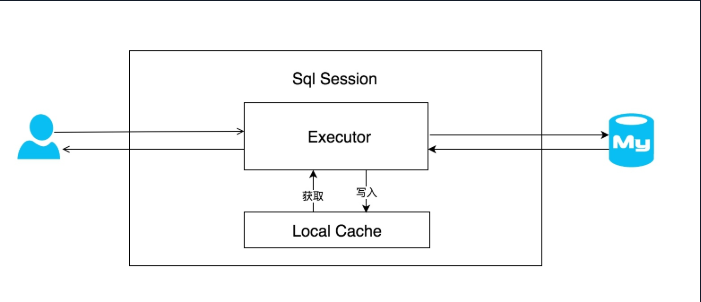
每個 SqlSession 中持有了 Executor,每個 Executor 中有一個 LocalCache。當用戶發起查詢時,MyBatis 根據當前執行的語句生成 `MappedStatement`,在 Local Cache 進行查詢,如果快取命中的話,直接返回結果給使用者,如果快取沒有命中的話,查詢資料庫,結果寫入 `Local Cache`,最後返回結果給使用者。具體實現類的類關係圖如下圖所示。

#### 一級快取配置
我們來看看如何使用 MyBatis 一級快取。開發者只需在MyBatis的配置檔案中,新增如下語句,就可以使用一級快取。共有兩個選項,`SESSION`或者 `STATEMENT`,預設是 `SESSION` 級別,即在一個 MyBatis 會話中執行的所有語句,都會共享這一個快取。一種是 `STATEMENT` 級別,可以理解為快取只對當前執行的這一個 `Statement` 有效。
```xml
